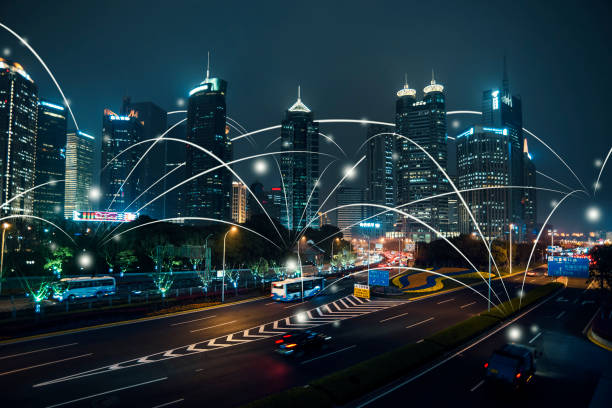As more commitments are made to the development of smart cities, the transport industry has found many applications for artificial intelligence (AI) to digitise their operations. Unlike other sectors, public transport is vulnerable to human error (leading to 94% of all crashes), changes in government legislation (such as net-zero goals), and economic pressures such as rising fuel prices, supply chain disruptions, emergency repairs and high costs associated with transitioning to electric vehicles (EVs). AI offers a lifeline for an industry that faces such a unique set of challenges, says Joao Tiago Ascenao, vice president, artificial intelligence at Stratio Automotive.
Utilising IoT networks, automation, and insights, we have seen the development of ticketing and journey planning apps that make it easier for customers to get from A to B, for example. We have also seen providers introduce surveys that inform customers how busy services are and allow them to report back on their experiences. These use cases for AI have undoubtedly improved the state of public transport already, helping customers take the fastest route at a time when delays and cancellations are commonplace, whilst providers benefit from day-to-day customer feedback that helps them improve the service.
Unfortunately, however, the most common applications of AI are being used to treat the symptoms and not the cause of the major issues with public transport networks, doing little to help providers get to the root of the outstanding issues. Although transparency is paramount for customers, letting them know their bus is going to be late (or not arrive at all) simply isn’t enough to revolutionise the industry.
The good news is that things are starting to change. There is a real willingness within the industry to adopt new solutions, indicating the level of necessity felt amongst decision makers to improve services, draw more customers in and create greater financial stability. In fact, UITP International Association of Public Transport reported that 86% of public transport stakeholders are engaged in partnerships to develop and adopt AI. To create truly ‘smart’ transport networks, providers need to challenge their thinking about what AI, data insights and analytics can deliver, and embrace travelling the path less followed to digitise in a way that is truly transformative.
Fleet management and predictive maintenance

With its ability to collect and analyse vehicle data to predict component failures before they cause breakdowns, the use of augmented intelligence for fleet management and predictive maintenance is one such solution which is set to become ubiquitous across the public transport industry over the next five to ten years. By leveraging built-in vehicle sensors using automotive grade IoT hardware, the technology can gather up to 500 times more data than a standard GPS system, allowing fleet managers to ‘listen’ to the vehicle. This can be harnessed to enhance reliability and sustainability and reduce maintenance and operational costs so that operators can reinvest in the network. Buses are less likely to break down while in service, and maintenance can be scheduled for times when the bus is not required on the road.
Using the technology, Arriva’s Czech Republic fleet recorded a 13.5% increase in time between failures, a 66% towing reduction due to vehicle breakdown and total net cost saving of 2% per km per year. Fleet operator Keolis has also already leveraged the technology to reduce fleet fuel consumption by 6-7%, representing a step closer to cheaper and more sustainable operations.
AI predictive maintenance enables operators to tune in to the state of health of their vehicles. This combination of AI and IoT allows the algorithms to constantly evolve, picking up data about different categories of vehicle and enabling return on investment especially for the costly transition to electric vehicles. AI can identify tricky faults that humans could overlook tracing leaks in the compressed air system or the wear and tear of brake pads, for example, and analyse driver patterns for traffic accident prevention and fuel savings.
These technologies deliver more than just short-term benefits. By enhancing maintenance processes to guarantee a reliable service with limited disruptions that runs at the lowest possible cost per mile, public transport providers can meet the high demands of their service level agreements (SLAs) with public transport authorities (PTAs) more easily, and ultimately win more contracts, securing their future role in smart cities.
Route analysis

AI doesn’t only serve a purpose for reforming current services; it can support route planning by predicting and providing visual data on how new routes would run. Many bus routes become sub-optimal as our cities develop and the needs of inhabitants change, and demand increases in new areas as housing developments are finalised, or new business hubs or shopping districts are built.
When introducing new bus routes, we rely on people to analyse limited datasets and gauge how popular a given route might be, what times of day the service would be most popular, potential high-traffic areas, and other relevant information. With AI, this can be automated, making roll-out quicker whilst reducing the number of teething problems experienced once buses hit the road. It also frees up time for fleet managers to spend on bigger tasks, such as initiating the rollout of new EV fleets.
The AI-powered planning and scheduling of the movement of vehicles and drivers to improve the quality of transit services can be integrated with predictive maintenance to create a data-driven ecosystem that covers vehicle safety, servicing, and operations. This increases the reliability of the service passengers can access and takes us a step closer to creating truly smart cities, designed with citizens in mind.
Monetising EVs
There is no longer any question regarding the transition of bus networks to electric vehicles it’s a matter of when, not if. The big challenge now being faced is how to make the transition effectively, and how providers are going to afford it. Monetisation is undoubtedly the biggest concern for public transport providers, since the up-front costs are extremely high upping fares isn’t an option if they want to increase their customer base, so what else can they do to ensure the lowest cost-per-mile?
This is where the real power of AI and ML (machine learning) can be unleashed; real time analytics and predictive insights are the ‘trump card’ for fleet managers, enabling them to track battery performance, pinpoint optimal charging points, and foresee energy usage in different weather and traffic conditions. All this can be done instantaneously as data is fed continuously into the algorithms, supporting the elongation of battery life (which accounts for around 40% of the total vehicle cost) whilst delivering reliable services to customers.

Predictive battery analytics can provide an accurate, comprehensive view of the battery health evolution of an EV bus, allowing for effective route planning and charging requirements, as well as usage optimisation metrics to extend the lifespan of the vehicles. By leveraging state of charge (SoC) and depth of discharge (DoD) data, fleet managers can understand if the operation profile can be changed to maximise battery life, reducing the total cost of ownership of electric buses. This type of analysis is fundamental for an operationally successful and profitable EV fleet deployment.
By widening the pool of transport operators using artificial intelligence and machine learning technology, we can expect truly smart city transport to become a reality very quickly. Leveraging existing networks of highly-interconnected devices and vehicles, and orchestrating them to work efficiently, opens up great opportunities for the industry to become greener, more cost-efficient, and ultimately, reliable enough to encourage more people to leave their cars at home.
The author is Joao Tiago Ascenao, vice president, artificial intelligence at Stratio Automotive.
Comment on this article below or via Twitter: @IoTNow_OR @jcIoTnow










